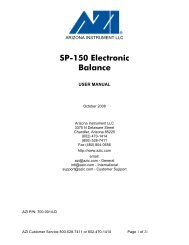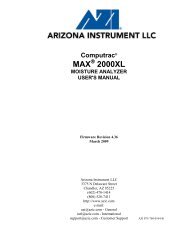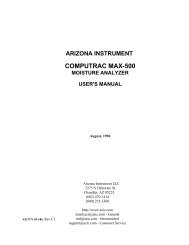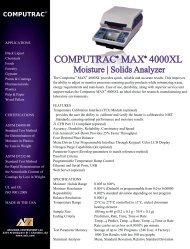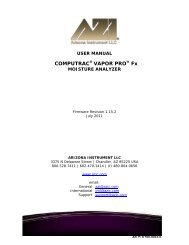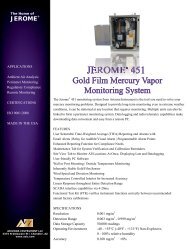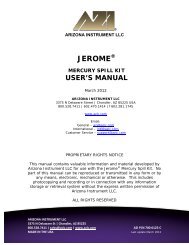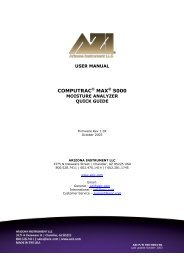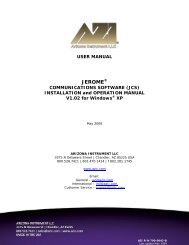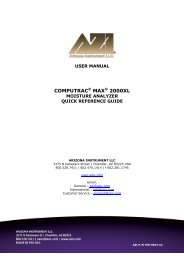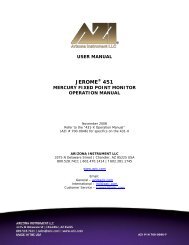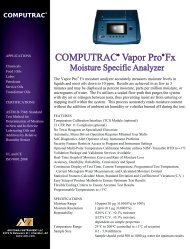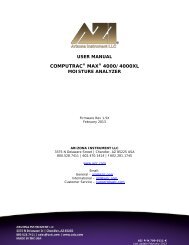Computrac MAX-1000 User's Manual - Arizona Instrument
Computrac MAX-1000 User's Manual - Arizona Instrument
Computrac MAX-1000 User's Manual - Arizona Instrument
Create successful ePaper yourself
Turn your PDF publications into a flip-book with our unique Google optimized e-Paper software.
10.1.8 During the entire testing process the microprocessor monitors the sample's weightloss. The sample's decreasing weight is compared to the initial sample weight andthe calculated moisture concentration will appear on the display. Simultaneously,the microprocessor is predicting a final moisture concentration based upon thesample's rate of weight loss compared to the exponential portion of a standarddrying curve. Testing will continue until the predicted moisture concentrationagrees within a certain percentage of the actual moisture concentration appearingon the display. The percent agreement between the predicted and the actualmoisture concentrations will vary depending upon the system's programming andthe moisture level of the sample.10.1.9 The <strong>MAX</strong>-<strong>1000</strong> is an extremely flexible instrument. This flexibility means thatsome time is required to determine the best set of parameters for a particularapplication. The determination of the proper parameters requires a series of tests,and good laboratory procedure. AZI Sales and Customer Service personnel aretrained to help in this process. If any questions arise, please call (800) 235-3360or (602) 470-1414 for assistance.10.2 DETERMINING PROPER TEST TEMPERATURE10.2.1 To decide the proper test temperature for a particular sample, prepare a moistureversus temperature curve. Sample material is tested at increasing temperatures,usually in five or ten degree increments. If the moisture concentration of thesample material is known, as determined by a reference method (vacuum or airoven), then the <strong>MAX</strong>-<strong>1000</strong>'s temperature can be adjusted until test resultscorrelate with the established moisture concentration.10.2.2 The starting temperature is usually the standard or reference method temperaturefor that particular sample. Results for each increasing temperature will usually riseto a plateau where several increasing temperatures do not change the resultssignificantly. Beyond this plateau results rise dramatically, (Figure 54).Examination of the tested sample shows burning or charring.10.2.3 Results along this plateau usually correlate well with the standard or referencemethod results. Repeated testing should be done at temperatures in this range.Several tests are performed using the same sample size and test parameters.Results from these repeated tests are tabulated to calculate the mean, or average,and the standard deviation (S.D.). Analysis of the mean and standard deviation,and their comparison with reference method results, determines that the proper testtemperature has been used. If mean values do not compare well, or if the standarddeviation is too large, test at another temperature along the plateau.50



